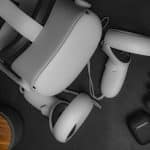Creating a noise-free environment is crucial for anyone involved in audio production. Whether you’re a professional sound engineer, a budding podcast creator, or a gamer looking to enhance your experience, reducing noise levels can significantly improve your sound quality. One effective way to achieve this is by using a sound-dampened PC case. This guide will delve into the best methods to set up a noise-free environment, ensuring you achieve optimal results.
Understanding the Sources of Noise in a Recording Environment
Noise in a recording environment can arise from various sources, often leading to poor audio quality. One primary source is your PC case, especially if it’s not designed with soundproofing in mind. Fans within the PC, spinning hard drives, and vibrations from internal components can all contribute to unwanted background noise.
Also to discover : How do you configure a secure home office network using a Netgear Nighthawk AX12 router?
To combat this, understanding and identifying these noise sources is essential. Fan noise is particularly problematic as it can interfere with sensitive microphones and delicate audio equipment. Likewise, vibrations can travel through your desk and into your microphone stands, further degrading sound quality.
Another potential source of noise can be your room itself. Bare walls and floors can amplify and reflect sound waves, creating echoes and making it harder to capture clean audio. This is where acoustic considerations come into play. Soundproofing your room can help, but it requires a strategic approach to ensure that noise levels are minimized effectively.
Also to see : What are the detailed steps to configure an Intel NUC 11 for running multiple virtual machines with Proxmox VE?
Choosing a Sound-Dampened PC Case
When setting up a noise-free environment, selecting the right PC case can make a significant difference. A sound-dampened PC case is specifically designed to reduce noise emissions from within the case, offering a quieter working environment.
Look for a case with soundproofing materials such as acoustic foam or sound-absorbing panels. These materials help to absorb sound waves and reduce the overall noise level. Additionally, consider cases with vibration isolation features, which minimize the transfer of vibrations from internal components to the case itself.
Another factor to consider is airflow. A well-designed case should facilitate adequate cooling while maintaining low noise levels. Low noise fans can be an excellent investment, as they operate more quietly than standard fans while still providing efficient cooling.
When choosing a case, also pay attention to the build quality. A sturdy and well-constructed case can help reduce vibrations and noise leaks. Brands like Fractal Design and be quiet! offer excellent options for sound-dampened PC cases that are both effective and aesthetically pleasing.
Implementing Acoustic Treatments in Your Room
Creating a noise-free environment goes beyond just selecting the right PC case; the room you’re working in plays a pivotal role. Acoustic treatments can help reduce background noise and improve the overall sound quality in your recording space.
Start by adding acoustic panels to your room. These panels are designed to absorb sound waves, reducing echoes and reverberation. Placing these strategically around your room can significantly improve the acoustic environment. Focus on the walls and ceiling, as these are common areas where sound waves bounce and cause echoes.
Sound insulation is another crucial aspect. This involves preventing external noise from entering your room. Installing soundproof doors and windows can help, as well as adding weather stripping around the edges. If you’re on a low cost budget, even heavy curtains can make a difference by dampening outside noise.
For those who require an even quieter environment, consider using vibration isolation pads under your desk and equipment. These pads help absorb vibrations and prevent them from traveling through your furniture, further reducing noise levels.
Optimizing Your Audio Equipment Placement
The placement of your audio equipment can greatly affect the noise levels in your recording environment. Proper placement can help minimize background noise and ensure that your recordings are as clean as possible.
Start by positioning your PC case in a location where it is least likely to interfere with your microphone. Placing it under your desk or in a sound-dampened cabinet can help reduce direct noise. Ensure that there is adequate ventilation to prevent overheating.
Your microphone should be positioned away from any noisy components. If possible, use a boom arm to suspend the microphone, which can help isolate it from desk vibrations. Additionally, using a pop filter can help reduce noise from plosive sounds during recording.
Using sound absorbing materials around your recording space can further reduce noise. Placing a rug or carpet under your desk can help absorb vibrations and noise from your PC case. Similarly, using soft furnishings like sofas or cushions can help dampen sound waves.
Utilizing Noise Reduction Techniques in Audio Production
Even with the best soundproofing and acoustic treatments, some noise may still find its way into your recordings. Utilizing noise reduction techniques during the audio production process can help clean up your recordings and ensure a noise-free final product.
One effective technique is using noise gates. Noise gates work by cutting out any sound below a certain threshold, effectively eliminating background noise when you’re not speaking or playing an instrument. This can be particularly useful in environments where some noise is unavoidable.
Another technique is using noise reduction software. Programs like iZotope RX offer powerful noise reduction tools that can clean up your audio recordings. These tools analyze your recordings and help identify and remove unwanted noise, leaving you with a cleaner sound.
Lastly, proper mixing and mastering can help reduce noise. By using EQ to cut out frequencies where noise is prominent, and applying compression to smooth out dynamic ranges, you can further enhance the audio quality of your recordings.
Achieving a noise-free environment for audio production involves a multi-faceted approach. By selecting a sound-dampened PC case, implementing acoustic treatments, optimizing equipment placement, and utilizing noise reduction techniques, you can significantly reduce noise levels and enhance your audio quality.
A soundproof PC case is a foundational step, as it addresses one of the primary sources of noise in your recording environment. Pairing this with acoustic panels, vibration isolation pads, and strategic equipment placement ensures that both internal and external noise sources are minimized.
Lastly, incorporating noise reduction techniques during the audio production process can help clean up any remaining noise, ensuring that your final product is as high-quality as possible. By following these methods, you’ll create an optimal environment for audio production, enhancing your studio experience and resulting in professional-grade recordings.











